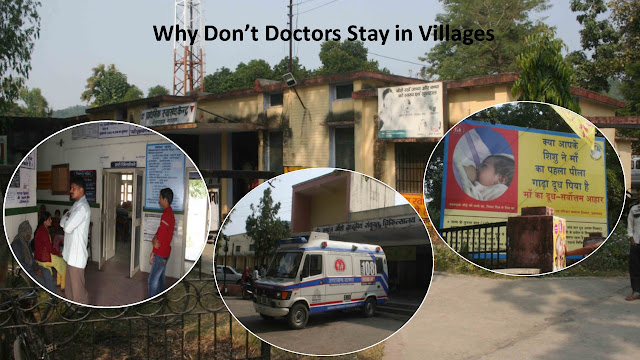Season of Mellow Fruitfulness and Mists
We are now at the tail end of the fruit season here in Buribana. Our house is in an orchard. To the east are long rows of young apple trees. These trees started bearing fruit this year and we kept a close watch and saw the dozen or so apples on each tree slowly grow and change colour over the weeks. Below our house is the more mature orchard of our neighbour Ram Singhji. In this orchard there are apples, and peaches and plums and apricots and a few Kaphal trees as well.
The season started with the bright orange juicy apricots, locally
known as khomani, in late May. Early in the season we were shown around the orchard
by Basantididi. The trees were laden with fruits. The apricots were either gola
or chapta. There were a few trees of the smaller local variety, which is tarter,
called the chuaru. This year the plums somehow were not so abundant, but the peaches
were in plenty. Most peaches had furry skins, but some were smooth. Basantididi
also showed us red peaches which looked more like plums. And then there were
apple trees. Apples are the most abundantly grown fruit in our village. The
early variety is called Fanny, and then is the Delicious and now people grow a
new variety which they say is more popular with consumers. Its either called
the Bhura or the Himachal ka sev. When we worked in this region thirty
years ago I recall there were some varieties 103, 12, 22, Golden, and Hara
Pichola, but I am told those varieties are no longer grown.
As we longingly watched the pears ripen on our solitary pear
tree we were plied with fruits from our neighbours. The variety of pear that we
have, locally called Jagnel is among the last fruits to ripen. It’s the size of
a big apple, green and firm, and crisp as you bite into it and very juicy and sweet.
Both Jashodhara and I consider it the best among all the fruits that grow here,
but then we are very biased.
Starting with the fruits, the agri-horticultural season moves
into top gear. Its time not only to send the fruits to the mandi or wholesale
market, but the vegetables as well. The Nainital hill potato is considered very
special and it is sent down packed in gunny sacks. In between some peas and
beans are also sent. Now that the fruits are nearly over, it’s time for the
cabbages. The marketing is complex. In the evening, the farmers bring their
produce to the roadside. Each box, crate or sack is marked by some initials and
numbers. It is a combination of the farmers name, the name of wholesaler he
sends his produce to and the number of the items he is sending down that day. A
paper record is also made. Every evening trucks pick up the produce and take it
over to the mandi in Haldwani. The farmers send their produce down with a familiar
trucker. Each truck carries many consignments, from many farmers, for many wholesalers
or agents. The produce is loaded, the paper record or challan is handed over to
the driver and unerringly the produce is delivered to the right agent in the
mandi. This year we sent 7 cartons of pears to the mandi. While the cartage was
ten rupees a carton, the agent a 20% commission was deducted by the agent.
Clearly the arrangement is tilted towards the agent.
The monsoons started in earnest a week ago. Dark clouds cover the sky and mists are rolling down the valley. Locally this time is known as the ‘chowmas’, it’s the busy agricultural season. Two weeks ago it was ‘harela’ or the local sowing festival and each family sprouted five or seven crops in a small cane basket and offered the saplings at the Bhumiya temple. Among the many crops grown at this time rajma or kidney beans are very popular in our valley as is maize. In other villages soyabean or bhatt and other legumes are grown. Madua or finger millet is slowly losing favour because it needs hard work and the produce is low. Women are the primary agricultural workers, and most of the produce of this season is for the home.
While the hills are green and the fields are lush with crops,
agriculture does not remain a very satisfying livelihood option for the
families in our village. Farmsteads and family sizes have become smaller. In
most families some members have migrated out. In two of our neighbouring homes
there aren’t enough hands for picking and packing the fruits. In another neighbour’s
family the two girls are either working or attending college and do not stay in
the village. The two younger boys help in the field and in managing the animals
but will soon leave as they too are completing school. Most young women and men
leave their homes for higher education even though there is a college and a
polytechnic in the area. The college doesn’t offer either science or commerce courses
and the polytechnic doesn’t have the more popular courses.
In the last few months through a series of conversation with
young men I learnt that many of the youth who were working elsewhere and had migrated
out returned because of Covid and even now they are still at home because work
is hard to come by. This year the Buribana cricket team had a very good run in
the local tournament because of this. But the young men are desperate for more
fruitful livelihood options. Farming or horticulture does not seem to be the
way they can or want to make their future.




Lovely piece. Thank you for writing about your new and well chosen life. Its a hard life but worth every minute of it. The challenges of our changing times. Migration, among other things.
ReplyDelete